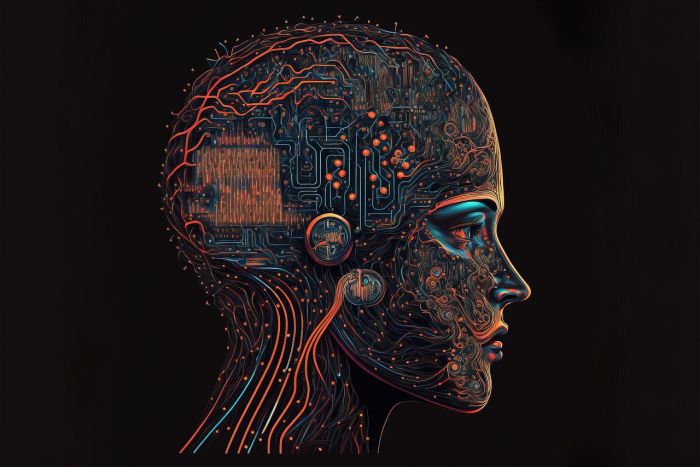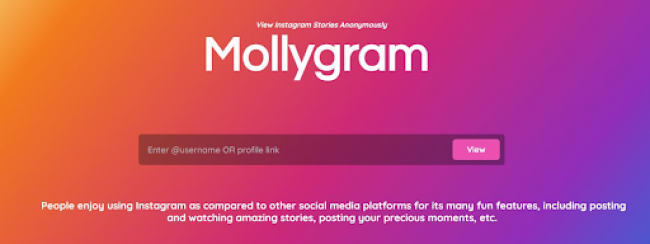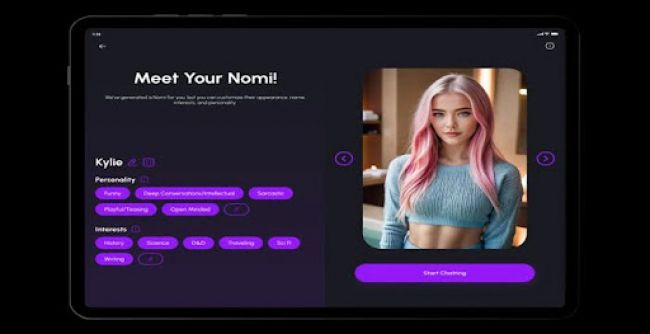Software-as-a-service (SaaS) is starting to become the first choice for many organizations worldwide. It’s continuously redefining how businesses work and how our life is impacted by the tools and apps we use.
Regardless of which app you are using when working or finding out how you get to work, SaaS products are now becoming mandatory for businesses, just like the tools and apps we use on a daily basis.
As of 2025, there are more than 42,000 SaaS companies worldwide and In this article, we’ll dive deeper into learning more about SaaS trends in 2025.
1. AI-native SaaS
AI-native SaaS refers to software-as-a-service (SaaS) platforms that are built from the ground up with AI at their core, not just adding AI features on top, but integrating them into the infrastructure, workflows, and value proposition.
Key characteristics of AI-native SaaS include:
- AI is foundational: The product’s core functionality depends on AI/ML models (OpenAI, proprietary LLMs, computer vision, etc.).
- Continuous learning: The platform improves over time through user interaction and data feedback loops.
- Dynamic personalization: Real-time customization of experiences, content, or actions based on AI understanding of users.
- Automation-first: Tasks that were manual or rules-based are now handled dynamically via AI.
- Data-centric architecture: Designed to handle large volumes of unstructured and structured data efficiently for AI processing.
AI-native SaaS is reshaping the SaaS landscape by lowering operational costs via automation, offering new user experiences, making previously complex or expensive capabilities accessible to Server Making Blocks (SMBs), and allowing products to deliver exponential value as they learn.
2. AI and ML integrations

Artificial Intelligence (AI) and Machine Learning (ML) are closely related but distinct concepts. Let’s break it down in a practical way, what it means, and how it works.
When it comes to traditional SaaS, features are rule-based and static. They are innovating SaaS solutions, allowing more innovation and personalized services to improve the user experience and increase operational efficiency.
AI and ML are technologies that allow SaaS platforms to adapt to user behavior automatically, predict outcomes, automate repetitive tasks, and generate content, decisions, or even code.
That being said, let’s take a closer look at how AI and ML are used in SaaS:
- Personalization: AI models tailor the experience for each user.
- Automation: Automate repetitive tasks.
- Predictive analytics: ML models forecast key business metrics such as customer churn, lead scoring in CRMs, and sales forecasting.
- Generative AI: Creating content, code, or design.
- Conversational AI: Chatbots and assistants that feel human and offer 24/7 support.
3. Vertical SaaS
Vertical SaaS refers to software-as-a-service solutions that are specially built for a particular industry or niche, as opposed to horizontal SaaS, which specifically serves a broad range of industries (like CRMs or email platforms).
Vertical SaaS targets specific markets such as healthcare, legal, real estate, education, finance, etc. Overall, vertical SaaS makes it easier to dominate a niche with less competition, has higher customer retention due to industry-specific features, a higher willingness to pay for tailored value, and more upsell potential via value-added services.
The vertical SaaS lifecycle works like this:
- Starts with a single use case (e.g., online booking for salons)
- Expand feature set (add CRM, marketing tools, inventory)
- Own the vertical (add fintech, AI copilots, compliance)
- Upsell via ecosystem (marketplaces, plugins, premium AI features)
Founders will always favor vertical SaaS since it’s so easy to get initial traction through word of mouth, has a higher average contract values (ACV), and makes it much easier to build a “moat” through industry data, compliance, and integrations.
4. SaaS marketing firms are innovating the Go-To-Market (GTM)
Something else that’s changing in 2025 is that SaaS companies are no longer relying on in-house marketing. Some of the best SaaS marketing firms are landing a new wave of go-to-market innovation, blending AI-driven customer segmentation, vertical-focused messaging, and community-led growth strategies.
These firms specialize in scaling niche SaaS brands with agile tactics that adapt to shifting purchasing behaviors.
Regardless if you’re a Micro SaaS founder or an enterprise platform, partnering with the right marketing agency can dramatically shorten your path to product-market fit and sustainable revenue.
5. Adoption of SaaS in the construction industry
You’d actually be surprised about this one, but the construction industry is rapidly adopting SaaS solutions, especially as the sector shifts towards digital transformation in 2025.
Traditionally speaking, construction is fragmented, manual, and makes you deal with heavy paperwork. When you are in a project, it’s no surprise that you’ll deal with dozens of contractors, hundreds of assets (tools, vehicles, and materials), compliance, inspections, and more.
SaaS is offering many choices, and a cloud-based and centralized way to track, communicate, and manage everything across the office and field. However, let’s take a closer look at what the key benefits of SaaS are in the construction industry:
- Real-time access: Replaces paper plans, spreadsheets, and walkie-talkies.
- Centralized data: Everyone works from the same up-to-date source of truth.
- Compliance tracking: Automates safety checks, permits, and inspection logs.
- Resource visibility: Track labor, tools, and inventory in real-time.
- Streamlined comms: Issue report, office messaging, and approvals.
- Analytics & reports: Forecasts delays, cost overruns, and productivity bottlenecks.
6. Micro-SaaS
Micro SaaS is a small-scale, highly-focused software-as-a-service business. It’s usually built by a solo founder or small team, and solves super specific problems for a narrow niche. Unlike traditional SaaS startups that are aiming to scale to millions of users, micro SaaS prioritizes:
- Simplicity
- Profitability
- Independence
- Low maintenance
- Stable recurring revenue
Key characteristics of Micro-SaaS include:
- Niche targeting: Built for a specific audience or workflow.
- Small team: Is often run by a solo founder or a small team.
- Web-based: Delivered through the browser or mobile app, just like other SaaS.
- Recurring revenue: Subscription-based pricing: $5-$100 per month is common.
- Focused features: Solves one or two problems extremely well, both a bloated product.
- Low overhead: No office, minimal infrastructure, often no marketing team.
Many might wonder why Micro SaaS is popular, but here are the reasons behind it:
- Low barrier to entry: Modern dev tools, no-code platforms, and APIs that let you build MVPs fast, often in a couple of days or weeks.
- Predictable revenue: If you’re a solo founder, even if a couple hundreds of users pay a monthly subscription.
- No VC pressure: Many micro SaaS founders will focus on profit over scale.
- Work-life balance: Build once, then maintain and improve. Many founders work part-time or automate support.
7. White-label SaaS
White label also refers to a blank SaaS product label. White label software offers a large range of customization options that organizations are looking for. This might include unique features, user interface or functionalities that the customer specific based on what the business requires.
Many organizations are not interested in paying a one-time premium for white-label SaaS, and this is for making their business more flexible and scalable in the long term; also, let’s not forget that the subscription fees they’ll be avoiding along the way.
White label is most commonly used by marketing agencies, coaches/consultants, web designers, and niche influencers.
White-label SaaS has numerous benefits associated with it, most importantly for resellers, since no coding or development is required and you can launch it in a few days or weeks. As for SaaS creators, it allows developers to create a partner ecosystem, and earn passive revenue from resellers.
8. No-code/low code development

No-code and low-code platforms are development environments that allow users to build software with little to no traditional programming. No-code includes visual tools with drag-and-drop interfaces, specifically made for non-developers. On the other hand, low code combines visual building with minimal scripting, ideal for devs looking to speed up delivery.
These platforms democratize software creation, allowing marketers, entrepreneurs, product managers, and small businesses to launch apps, workflows, and MVPs fast. Key features include:
- Drag and drop builder
- API integrations
- Multi-platforms
- One-click deploys
- User management
Statistics show that 70% of new apps will use no-code/low-code technologies by 2025.
Building the future of SaaS, one trend at a time
As we dive deeper into 2025, it’s no surprise that SaaS is no longer just a software delivery model, but it’s a dynamic, ever-evolving ecosystem where innovation, automation, and user-centricity reign supreme.
The future of SaaS is being shaped by agility, personalization, and speed. Regarding founders, marketers, and builders, these trends aren’t just buzzwords, but rather considered as roadmaps. Adapting to them means remaining competitive, and actively creating the next wave of high-impact, high-retention software.
SaaS in 2025 isn’t just about software, but about smart systems, human-first design, and reimaging what’s possible.
About The Author:
Tony Ademi is a freelance SEO content and copywriter. He has been in the writing industry for five years and has managed to write hundreds of SEO-optimized articles. Moreover, he has written articles that have ranked #1 on Google. Tony’s primary concern when writing an article is to do extensive research and ensure that the reader is engaged until the end.
Post Comment
Be the first to post comment!

